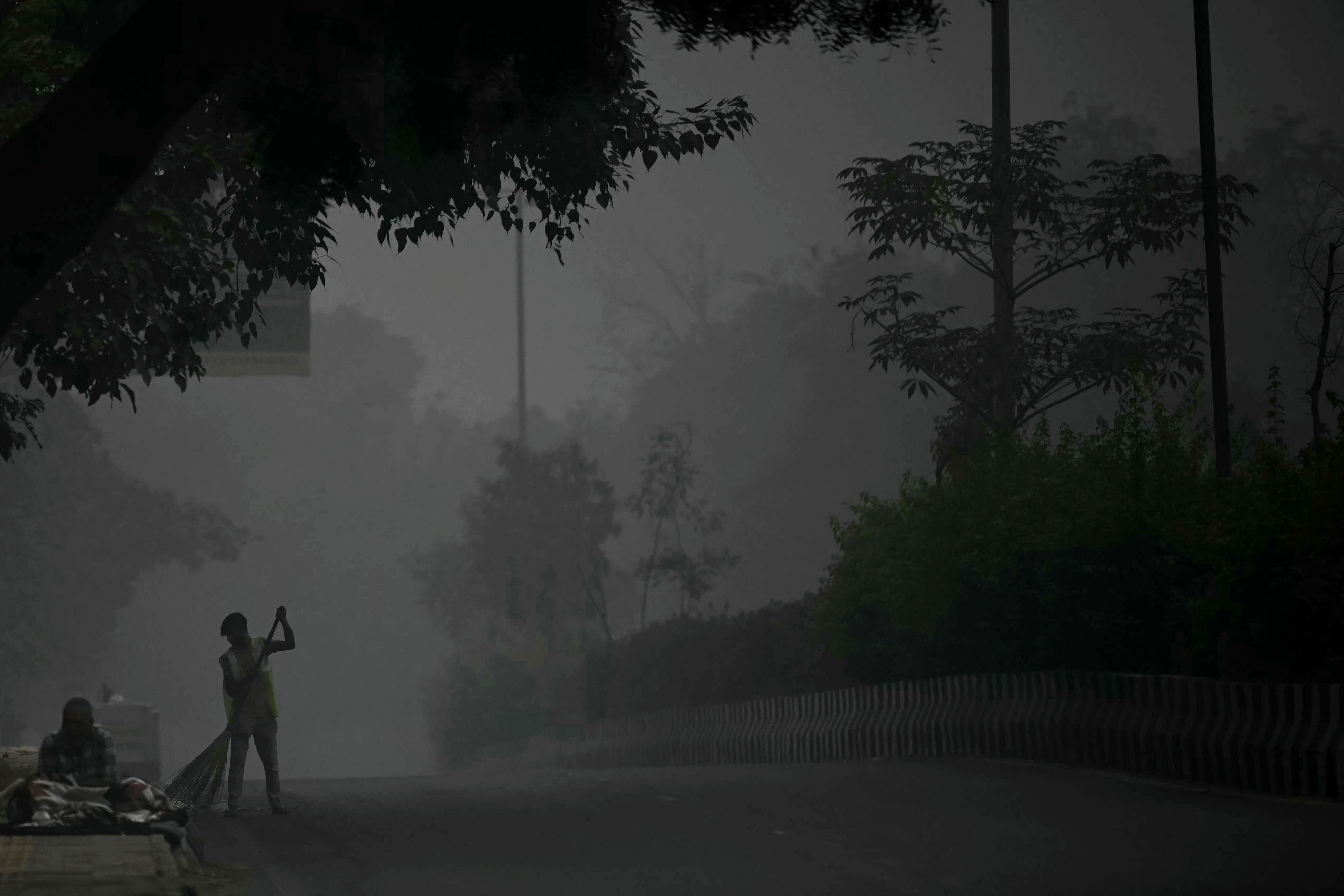New Delhi ranked as the world’s most polluted city on Wednesday morning as residents in the Indian capital woke up to a thick blanket of haze, marking a severe air emergency.
The pollution led to an air quality index (AQI) score of more than 1,000, considered “hazardous”, brought down visibility levels, and led to flight cancellations.
Delhi overtook Pakistan’s Lahore as the world’s most polluted city in Swiss group IQAir’s live rankings, with an air quality index (AQI) score of more than 1,000, which is considered “hazardous”, but India’s pollution authority said the AQI was around 350.
The AQI of 350, measuring the levels of inhalable particulate matter PM2.5, that can cause serious respiratory ailments, was at least 30 to 35 times more than the safe limit prescribed by the World Health Organization.
This is the first time this year the AQI reading for PM2.5 crossed the 1,000 mark in Delhi, leaving the city wreathed in a hazy grayish-yellow cover.
The AQI readings below 100 are considered to be satisfactory for breathing, under 200 are marked “poor”, while the 400-500 range mark pollution levels as "severe" in an area.
AQI 1696. Vasant Vihar, south Delhi #DelhiAir #DelhiAirPollution #LetMeBreathe pic.twitter.com/rUFU7oaXpn
— Shivam Vij (@DilliDurAst) November 13, 2024
New Delhi has overtaken Pakistan’s Lahore which was the world’s most polluted city for the past week as the satellite images confirmed the country has been covered in toxic smog.

In Delhi, the pollution has reduced visibility to 100m (328ft) in some places around 8am, the India Meteorological Department said.
"Low visibility procedures" were initiated at the city’s Indira Gandhi International Airport, operator Delhi International Airport Limited said in a post on social media platform X.
The view from my window at Delhi NCR. Air Pollution at its best today and AQI is above 485 right now.
— Licypriya Kangujam (@LicypriyaK) November 13, 2024
This pictures sent to me by my sister. pic.twitter.com/nUol6ZnVcR
"While landing and takeoffs continue at Delhi Airport, flights that are not CAT III compliant may get affected," the authority said. Under category three, the navigation system enables aircrafts to land in low visibility situations.
The Indian capital city and its satellite regions of Noida and Gurgaon battle severe pollution every winter as cold, heavy air traps dust, emissions, and smoke from farm fires set off illegally in the adjoining, farming states of Punjab and Haryana.
Delhi, Is this what you ask for?
— Chaitanya Sabharwal (@chaitan72003) November 13, 2024
20 cigarettes a day when the AQI was 400-500. Now it's reaching 900.
Breathing toxins is the only common thing that all the Delhiites are doing right now.
Demand actions & policies that will get this issue resolved.#Pollution #AQI #DelhiNCR pic.twitter.com/o5B4x5JvM1
AQI has crossed 1500 in some parts of Delhi. This is a health emergency… pic.twitter.com/bXp6NZDQJH
— ishaan prakash (@ishaan_ANI) November 12, 2024
In the previous years, the Delhi government ordered shutting of schools, restrictions on private vehicles, and stopped some building work to curb the problem.

Northern India, especially Delhi, falls prey to its geographical disadvantage every year during the onset of winter and suffers from an air apocalypse which has shortened the life span of its millions of citizens.
The top factors include year-round pollution, industrial pollution, stagnant wind conditions and smog emanating from its wheat basket states Punjab and Haryana where farmers resort to burning rice straws in order to clear the waste on their farmlands and prepare it for the next cultivation season.
These combine to result in trapping of extremely poisonous air in the atmosphere which causes breathing difficulties, combined with headaches and itchy eyes for the residents.







